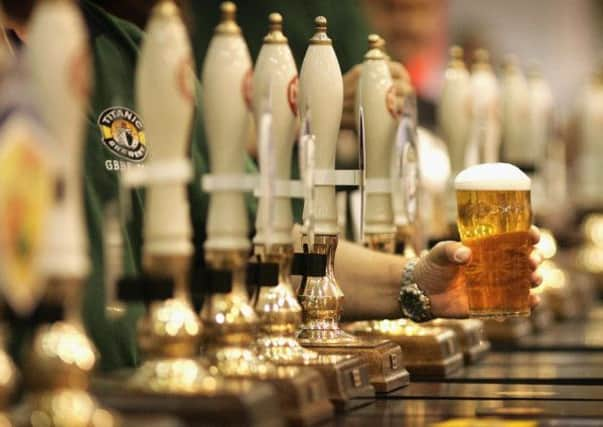Value of money falls by 91% in last 40 years


The study found £9.48 in 1973 would have the same spending power as £100 today, while the average price of a pint of lager has rocketed 20-fold over the period.
The rising cost of retail goods means someone who was a millionaire 40 years ago would need £10,553,000 today to enjoy the same spending power, according to Lloyds Bank, which analysed data from the Office for National Statistics.
Advertisement
Hide AdAdvertisement
Hide AdThe average price of a pint of lager increased from 14p in 1973 to £2.87 in 2013, while the cost of a loaf of bread rose more than 12 times, from 11p to £1.30. A pint of milk went up from 6p to 46p and instant coffee from 28p to £2.67.
Ashish Misra, head of investment policy at Lloyds Bank Private Banking, said: “There is no doubt that the value of money has fallen dramatically since 1973 as a consequence of the substantial rise in the general level of prices.
“It is likely to be reduced significantly further over the next 40 years, even if inflation is kept firmly under control.”
She added: “£1 million is still a lot of money, even though inflation has substantially eroded its purchasing power over the past four decades.
“Although £1 million cannot fund the lavish lifestyle it once could, it can still go a long way with careful financial planning.”
In the housing market, the average price for a detached property rose approximately 18 times over the four decades, from £16,980 to £305,3912, while a troy ounce of gold increased 30-fold, from £34 in 1973 to £1,051 today.
Similarly, fuel costs rose substantially, with diesel prices now 18 times higher than they were in 1973.
However, despite soaring inflation in recent months putting pressure on cash-strapped households, the biggest rise in the cost of day-to-day items came between 1973 and 1983, at an annual average rate of 13.6 per cent.
Advertisement
Hide AdAdvertisement
Hide AdThe lowest increase in inflation came over the period 1993 to 2003, with an annual increase of 2.6 per cent.
In the past ten years to 2013, inflation averaged 3.3 per cent per year, with the highest levels coming post-recession at the end of the last decade.
If retail prices were to rise by 2.8 per cent annually – in line with government targets – the value of money would decline by a further 67 per cent over the next 40 years.
If inflation follows this pattern, Lloyds said, a shopper would need £311 in 2053 to have the same spending power as an individual with £100 today – or more than £3 million to enjoy the equivalent lifestyle of a person with £1 million today.
Lloyds based the calculation on estimates that a 2.8 per cent rise in Retail Prices Index (RPI) inflation would be consistent with the government’s 2 per cent target for Consumer Price Inflation (CPI).